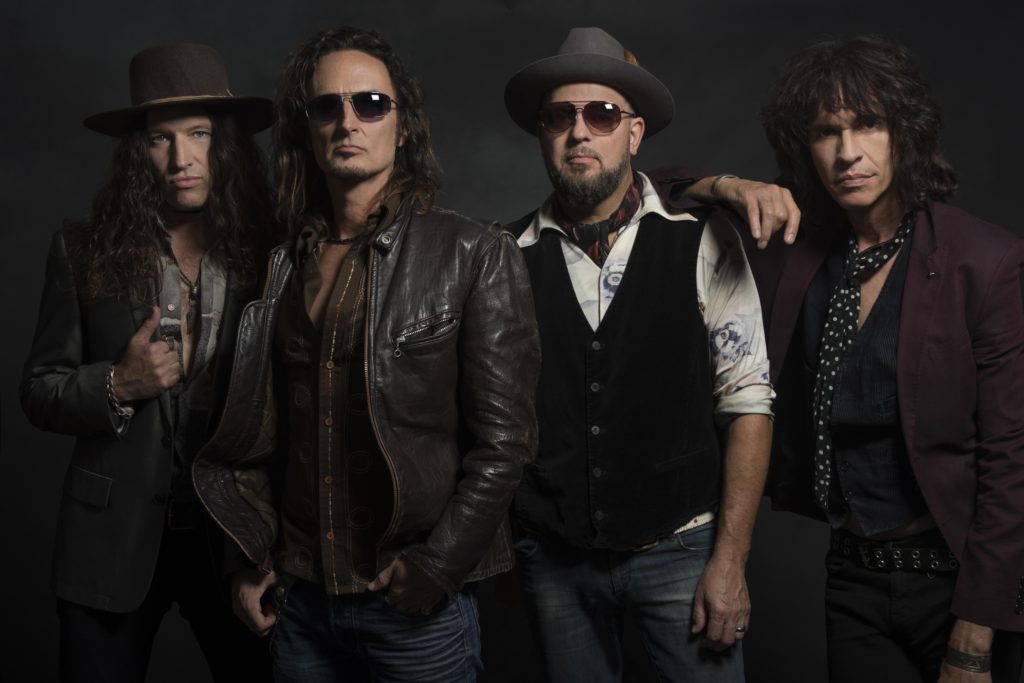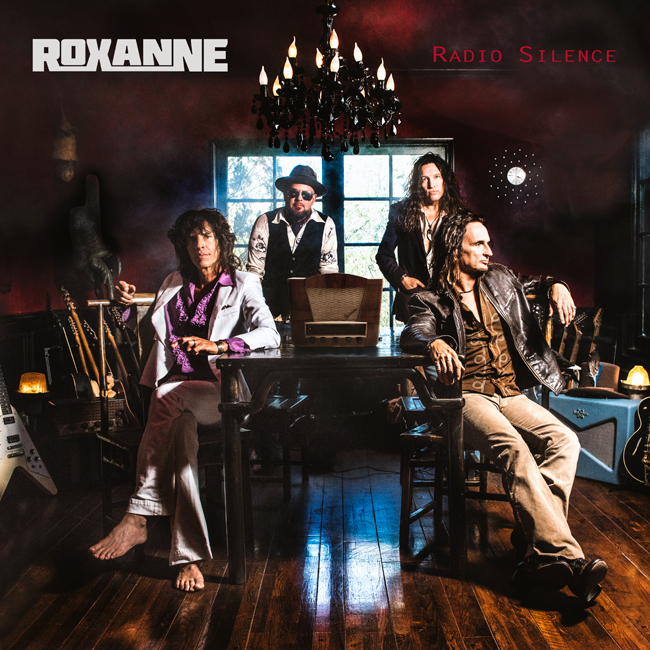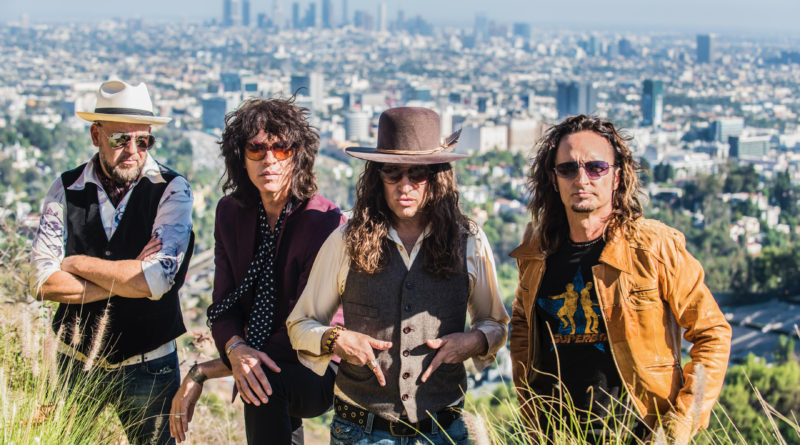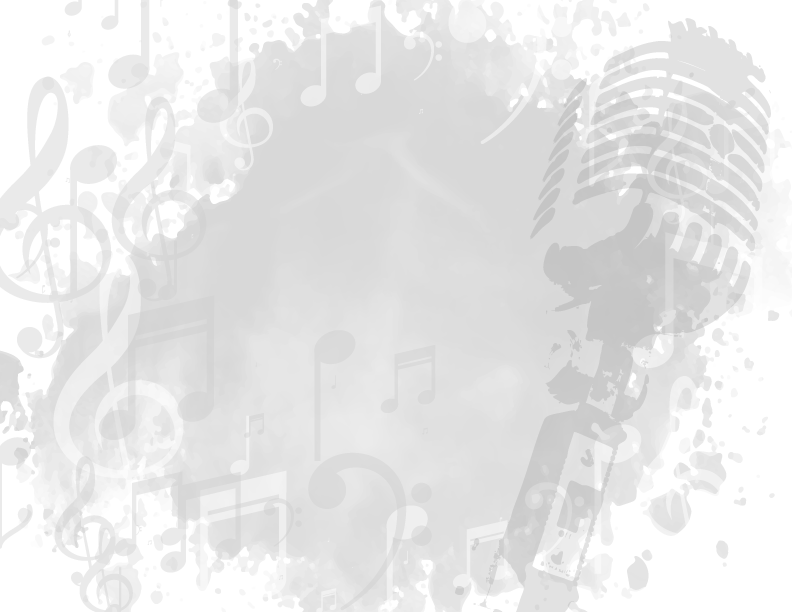Breaking The Silence: A Conversation with Roxanne’s Jamie Brown
Roxanne’s new album, “Radio Silence,” (released Oct. 26 on Rat Pak Records) is an unadulterated sonic confirmation that good things do indeed come to those who wait
It’s been a few years (30, to be exact) since frontman Jamie Brown and bandmates Joe Infante (bass), John Butler (guitar) and Dave Landry (drums) delivered their self-titled debut album to an eager listening public at the apex of Sunset Strip-era hard rock. But the cracks in an already-overcrowded scene were beginning to show.
“Our record came out in ’88, and it was on the chopping block by then,” said Brown of the West Coast music scene in a phone interview. “There were things popping up, and you could see on the horizon that it was going to be over for Sunset Strip metal.”
He was right, and soon thereafter Roxanne went into a self-imposed 30-year slumber exactly one record in.
Brown kept himself and his bandmates busy, however, by putting together his Perfect World Entertainment company, a world leader in the production of musical-era tributes. Roxanne was sleeping, but she wasn’t dead.
And now, three decades later, the time is right for a reawakening.
The band’s brand of blues-based music, with its no-frills muscle and Queen-esque vocal harmonies is not only still there on “Radio Silence,” it’s there in spades, aged like a fine wine as is evidenced by the album’s uber-catchy “Someone To Kill” and “Broken Chandeliers,” as well as the closer, “First Mistake,” a winding 7-minute montage of 4-part vocal harmonies set amongst a classic Bad Company/Aerosmith-tinged riff before breaking into a beautiful acoustic guitar part and outro.
With “Radio Silence,” it truly is better late than never.
ListenIowa caught up with Brown recently to discuss the new album, and the long road that led to “Radio Silence” and the harmonies that lie within.
Did you grow up wanting to front a rock band?
I have two older brothers, and my whole family was into music and singing and playing; it was always around the house. But I actually got into filmmaking, and I was supposed to go to college for that. I was also playing in bands, though, so I had to choose more school or more rock n’ roll, and I took the rock n’ roll route. (laughs)
Anything in particular that tilted you in that direction?
Females and laziness. (laughs)
What was it about filmmaking that intrigued you?
I don’t know. I got interested in it as a kid, we made little movies, and any money I could scrape together, I would buy better camera equipment. I actually had a full scholarship to the Pasadena College or Art and Design that I bailed on to do music instead.
How did Roxanne get rolling initially?
Joe and I were in the market for a new guitar player and drummer, and there was a local Battle of the Bands in Riverside, California. We were on the judging panel, and we liked one of the bands. So they won — thanks to us — and then they joined our band. We wrote some songs, found a manager who lived in L.A., did a few showcases, and signed a deal with Scotti Brothers. We were a little bit different. Our name made it sound like we were (part of the Strip scene), but we were desert rats. We almost had a punk rock attitude during our shows.
You put out the self-titled debut in 1988. Did you do any touring behind it?
We did. That had a cover of “Play That Funky Music” on it, and it got on the record because we had been making a living playing covers. We were supporting ourselves by doing rock n’ roll versions of disco songs. The label had seen us in that capacity and wanted us to include one of those. We went out on a little van tour to promote the album. We knew people were going to want to hear “Play That Funky Music,” so we extended it into a medley that was about seven-and-a-half minutes long. In the middle, we played a little bit of “Staying Alive,” “Get Down Tonight,” and little bits of other things. And we were right. That turned out to be the highlight. That’s how we would close the show. And that’s how we paid our bills. We turned what we learned from that piece into a band called The Boogie Nights.
Roxanne then disappeared, but you had Boogie Nights going — that’s where you’ve been all these years.
We played as Boogie Nights with me as the singer for about five years, and at the same time I had expanded the business (Perfect World Entertainment) to the point where I couldn’t do these shows five nights a week and still answer the phone and get things done. So I hired Jeff Scott Soto to replace me in Boogie Nights. We probably have 150 musicians all over the country who are still working for the company. That’s my day job. I’m the owner with a partner, Roger Sause, who also appears on the new record. He was the musical director for Kenny G. I met him on the Roxanne hiatus because Atlantic Records funded a demo for a new Roxanne record. They wanted to see what we were up to. We tried doing dance music because of the success we were having with (The Boogie Nights). Long-haired white guys playing dance music. (laughs)
Why is it that those tribute acts are having such success these days? The nostalgia factor with a certain age demographic?
It’s hard to say “these days” because it was so popular when I started it in ’92 that I had to hire 100 people. It was an untapped market that nobody knew about. I knew if I didn’t do it, somebody else would, so I tried to get out in front of that wave. But we really don’t do tributes, we do an era. Our most popular band right now is The Spazmatiks, which is a new wave show, but they dress like nerds.
Thirty years later, what led to the decision to re-fire Roxanne up?
There was never a time that we didn’t want to do it, there was just never a time that made sense to do it. I had developed a relationship with Rat Pak (record label) because I had started making music videos for them. So with my not-going-to-film-school-talent that I had, I started making music videos. In the process, one conversation led to another, and the record deal happened.
You have all the original members back, which is unique in itself after such a long period of time. How did you guys get it back together?
We had all stayed friends, and were performing together anyway because of the music business. We’d stumble onto people now and then who said they loved the first record and we should make another. We would laugh and occasionally do a show. We opened for Paul Gilbert a couple of times; it was easy. We were already together, and there was never a time when we didn’t want to do it — but it just didn’t make sense. We had the opportunity, but it took exactly three years from the first day of tracking to release date. It was our schedules. We’d get in and track the drums for five songs, then get out and gig, gig, gig, then come back. The drums were probably recorded over four sessions.
Is the title a nod to Roxanne’s hiatus?
I think it is. There are multiple meanings to it, but it’s kind of the military, “Silence now. We’re going to do the mission, and then we’re going to be quiet.”
“Super Bad” features George Lynch (Dokken, Lynch Mob, Sweet/Lynch, KXM). It looked like a fun video to direct.
Yeah, I co-directed it with a buddy of mine. It’s a little bit difficult to direct when you’re in front of the camera and also be telling everyone what to do. Whenever you don’t see me, I’m behind the camera. I became friends with George when I shot the first KXM video. It turns out that we live a few miles from each other. When we were doing the Roxanne record, I’d been friends with Ray (Luzier of Korn, KXM) for 20 years and asked if he wanted to play on a song, then George wanted to play on it, and I got Dug Pinnick (King’s X, KXM) to do vocals on a song.
Is there a preferred style or sound that you consider to be in your wheelhouse?
We all really love Queen, but we’re not attempting to sound like Queen. Jeff Workman produced our first record, and he was the engineer on the first Queen records. We learned how to get those guitar sounds from working with him. And I learned how Jeff would stack vocals, so I hung onto those things that I learned from him. That might be where the similarities are, because I really dug those sounds.
The multi-part harmonies in “Radio Silence” are great.
I just enjoy that sound, I just like hearing the different depths and the different things that people do with vocals. We have the ability to do that and make it fun for the listener, so I really wanted to take the time to do it. There are a couple of songs where are no harmonies, but when there are, it really makes the song come to life.
Why record on record on 2-inch analog tape as opposed to digital?
When we did the first record, 2-inch analog was the only option at the point. Then everything converted to digital, and there are a lot of advantages to that. When it came time to do this record, we were trying to figure out what we were going to do. We chose to go with the analog tape for the warmth and the personality it gives the recording. We did the basic tracks on tape, put that into Pro Tools to do everything else and manipulate it around and do some arrangement changes, which was easier doing it there than the old way of cutting tape. Then we mixed back through the analog board through the tape deck, so we got the tape compression coming in and going out. It was the closest thing we could do to an entire analog recording.
There’s something to be said about recording in an actual studio and on tape as opposed to doing it in your basement on your computer. Character is lost when recordings are done that way. Many of the recordings sound the same these days.
I agree with that, and there’s a lot of it that I like, too. There’s a lot of current recording stuff that I like, and I’m glad that it exists. It depends on the guy behind the board, and the artist, and which direction they take it.
You’ve got your “day job,” but where do you want to take Roxanne from here?
We’d love to get out and open for somebody. We’re no strangers to being on stage. We’ve been doing it for 30 years. It’s just gotta make sense. It was the right time to make the record, and hopefully it’s the right time to get out and perform, too.
“RADIO SILENCE” TRACK LISTING
Someone To Kill
Girls Alright
Super Bad (ft: George Lynch)
Thin Blue Line
Broken Chandeliers
Man In The Moon (ft: Ray Luzier & dUg Pinnick)
Go Fuck Yourself (ft: George Lynch & dUg Pinnick)
Without Us
Quarter To Four
I Don’t Want to Live This First Mistake
For more information:
www.roxanneband.com
www.facebook.com/RoxanneRockBand/


